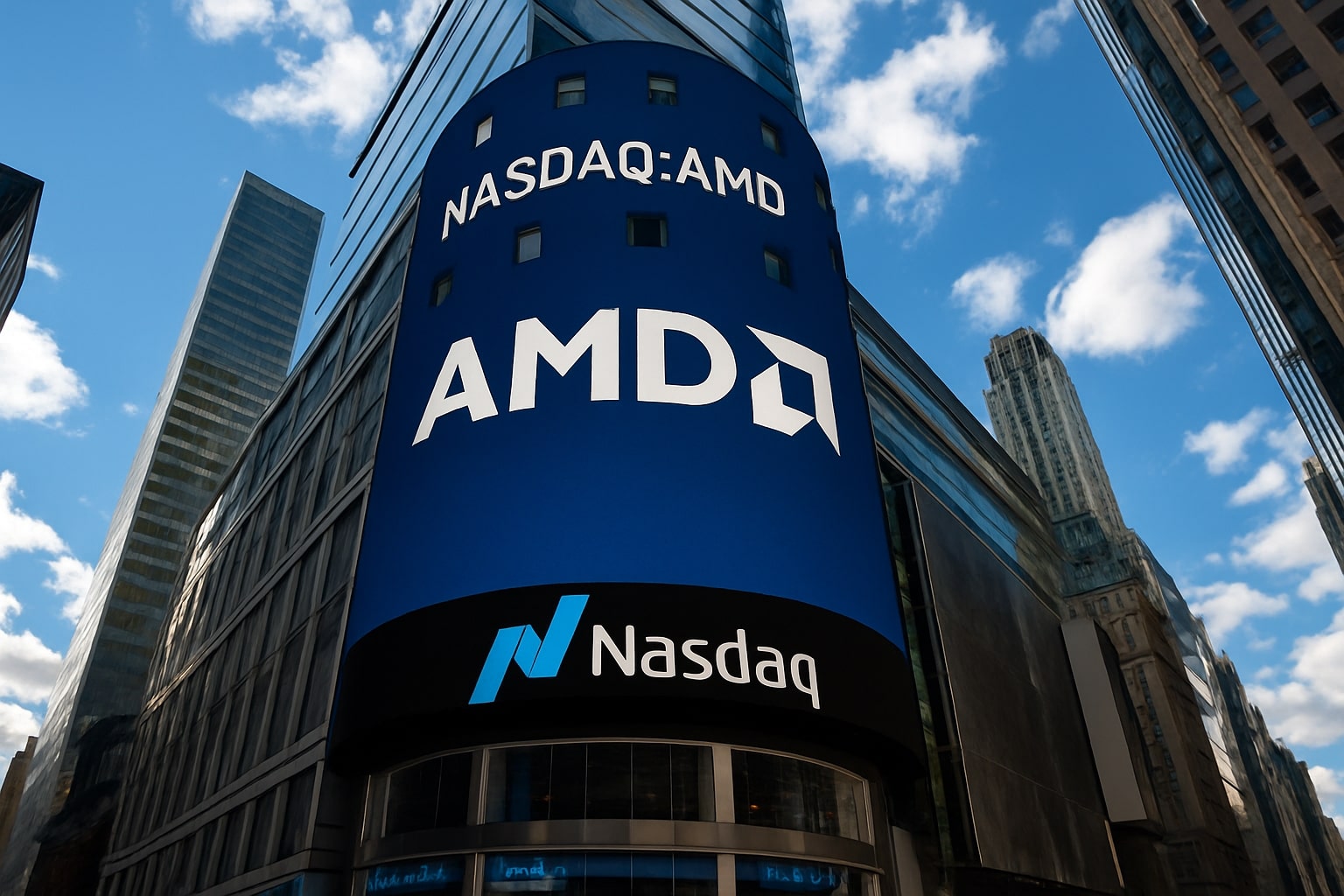
AMD Stock Price Climbs to $160 on AI Chip Growth and Data Center Momentum
With $12.6B data center revenue, 27% server CPU share, and EPS projected at $7 by 2026, AMD pushes higher while facing Nvidia’s 94% GPU dominance | That's TradingNEWS
NASDAQ:AMD Surges on AI Optimism While Valuation Debate Intensifies
Shares of NASDAQ:AMD climbed back toward $161.65, up 3.7% on the day, as optimism in the semiconductor sector reignited following Oracle’s bullish AI outlook. The move mirrors broader momentum across the chip industry, with global semiconductor sales reaching $62.1 billion in July 2025, a sharp 20.6% year-over-year increase. The AI-driven cycle remains the central driver, but AMD’s rally comes on the heels of a turbulent quarter that saw the stock fall nearly 20% from its $184.42 high in August, raising questions about sustainability.
AI Data Center Momentum and Chip Pricing Power
AMD’s data center segment remains its growth engine, delivering $12.6 billion in 2024 revenue, up 94% year-over-year. The launch of the MI350 accelerator, equipped with 288GB HBM3E memory, has allowed AMD to push through a 70% price increase, signaling confidence in performance gains. The shift in AI dynamics—from model training toward inference—could expand AMD’s opportunity. Management has described this pivot as a multibillion-dollar catalyst, with potential to grow annual AI-related revenue into the “tens of billions.” If inference accounts for 70% of the projected $286 billion AI chip market by 2030, AMD capturing even a 25% slice would represent nearly $50 billion in high-margin revenue, more than doubling its 2024 top line.
Market Share Gains Against Intel, But Nvidia Still Dominates GPUs
AMD’s EPYC server CPUs have expanded to a 27% unit share and 41% revenue share, up from single digits five years ago, steadily eroding Intel’s position. In desktop CPUs, AMD now commands about one-third of the market, further highlighting execution. The weak spot remains discrete GPUs, where Nvidia continues to control an overwhelming 94% share compared with AMD’s 6%. While CUDA’s software ecosystem entrenches Nvidia, AMD’s ROCm 7 update is beginning to show traction, though developer adoption remains slow. The gaming GPU division still drags performance, leaving AMD dependent on AI hardware momentum.
China Licensing and Geopolitical Exposure
A key swing factor has been U.S.-China chip policy. Reports indicate AMD, like Nvidia, received approval to resume China AI chip shipments under a 15% revenue-sharing agreement with Washington. This unprecedented compromise reopens a market worth billions annually but underscores AMD’s vulnerability to shifting regulations. A sudden revocation could wipe out a critical demand pipeline. With hyperscalers like Amazon, Alphabet, and Meta testing custom silicon—and Broadcom sealing a $10 billion deal with OpenAI—competitive risk adds another layer of pressure.
Read More
-
UCO ETF Price Forecast: Can NYSEARCA:UCO at $18.57 Ride a 2026 Oil Squeeze?
18.12.2025 · TradingNEWS ArchiveStocks
-
XRPI at $10.50 and XRPR at $14.93 Hit XRP ETF Lows While XRP-USD Holds $1.84 After 30 Days of Inflows
18.12.2025 · TradingNEWS ArchiveCrypto
-
Natural Gas Price Forecast: Henry Hub Holds Around $4 as EIA Draw Hits 167 Bcf
18.12.2025 · TradingNEWS ArchiveCommodities
-
USD/JPY Price Forecast: Pair Holds Above 155 As BoJ And US CPI Set Up A Major Break
18.12.2025 · TradingNEWS ArchiveForex
Valuation, Earnings Outlook, and Analyst Skepticism
AMD closed September 8 at $151.41, roughly 25x forward earnings, a discount to Nvidia but still above market averages. Analysts expect 2026 EPS of $6, but the estimate range runs as wide as $5–$9, reflecting uncertainty. Bulls argue AMD could exceed consensus, potentially delivering $7+ EPS next year, implying just 22x forward P/E. With projected 35% EPS growth, AMD trades at a 0.63 PEG ratio, well below the 1.5 PEG often considered fair for growth stocks. This math supports upside scenarios toward $257 in 2026 and $338 by 2027, provided execution remains flawless.
Stock Performance and Investor Positioning
Year-to-date, AMD has gained 34%, yet remains 12% below its 52-week high. Over the last five years, a $1,000 investment in AMD would now be worth $2,047, illustrating its long-term compounding power. The stock’s volatility has been pronounced, with 23 moves greater than 5% in the past year, highlighting sensitivity to news flow. Negative catalysts included Seaport Research’s downgrade to Neutral, citing AI slowdown risks, and New Street’s aggressive price target cut to $150 from $230. Despite this, momentum traders remain active, with daily volumes consistently above 57 million shares, keeping AMD a focal point of the AI trade.
Insider Transactions and Institutional Behavior
According to AMD insider transaction records, executive sales and option exercises have been steady but not at alarming levels, suggesting confidence in long-term growth. Institutional ownership remains above 65%, led by Vanguard and BlackRock, both of which have added to positions in recent quarters. Hedge funds, however, have been more tactical, rotating in and out with AI sector volatility.
Verdict: NASDAQ:AMD is a Buy With Execution Risk
At $160.13, AMD sits at a pivotal level. Its AI-driven growth trajectory, strong data center momentum, and expanding CPU share argue for continued multiple expansion, particularly as inference emerges as the dominant workload. Risks include Nvidia’s entrenched GPU dominance, hyperscaler custom chips, and geopolitical restrictions. Still, with forward valuation attractive relative to growth potential, AMD presents one of the most asymmetric opportunities in large-cap tech. The stock is best viewed as a Buy, with tactical traders eyeing resistance at $184.42 and long-term investors targeting $250+ by 2026 if earnings growth delivers.


















